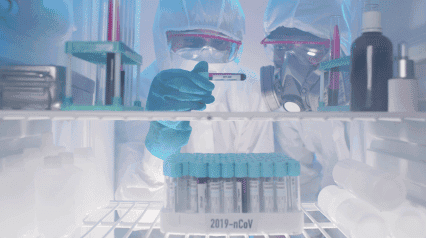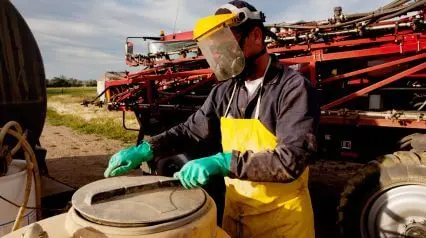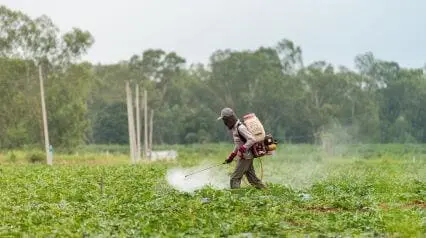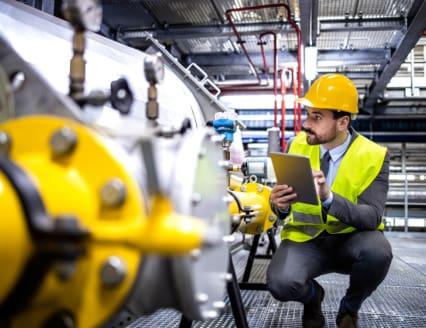Why is Vaccine Storage Important?
Vaccines are a critical factor in eradicating many common vaccine-preventable diseases. However, due to temperature control requirements for vaccines, cold-chain storage errors result in the revaccination of many clients and significant financial loss from the disposal of vaccine products. Failure to store vaccines properly can reduce vaccine potency and risk patients receiving ineffective health products, resulting in inadequate immune responses from patients and poor protection against disease—requiring patients to be revaccinated.
Vaccines are also expensive and can be in short supply. The total financial value of the vaccines contained within one vaccine refrigerator or cold storage can be significant.
‘Strive for 5’ – the Australian National Vaccine Storage Guidelines
The Australian Department of Health has released the National Vaccine Storage Guidelines – Strive for 5. The title refers to “Strive for 5” degrees Celsius—this is the point midway between +2°C and +8°C, which is the temperature range recommended for vaccine storage. While the recommended temperature ultimately depends on the type of vaccine being stored, many vaccines are damaged or destroyed at temperatures outside this range.
Below sets out the key aspects of these guidelines for relevant immunisation service providers.
Who does it apply to?
The ‘Strive for 5’ Australian Vaccine Storage Guidelines provide information and advice for vaccine storage management for Australian immunisation service providers, from medical practices to large hospitals, community pharmacies, clinics, and other medical outreach providers.
Key aspects of the guidelines
1. What is the safe vaccine temperature range and your ‘cold-chain breach’ reporting obligations?
The safe temperature range for storing and transporting vaccines is a temperature range of +2°C to +8°C and ensures that vaccine quality is maintained. The optimal storage temperature for vaccines is +5°C. The cold chain begins from the time the vaccine is manufactured, continues through to vaccine distribution centres and service providers, and ends when the vaccine is administered.
A ‘cold chain breach’ occurs when vaccine storage temperatures deviate outside the recommended range of +2°C to +8°C. All vaccine temperatures recorded below +2°C or above +8°C must be reported to your state or territory health department. This does not include temperature deviations or excursions in which the temperature reaches a maximum of up to +12°C for 15 minutes or less. Any deviation below +2°C must be reported. Do not use or discard vaccines until advice is received.
2. Nominate a staff member to be responsible for vaccine management
A trained, designated person is nominated to be responsible for vaccine storage and implementation of protocols. A trained backup person is also required to be available to relieve the designated person when needed.
3. Vaccines must be stored in purpose-built vaccine refrigerators
Purpose-built vaccine refrigerators are specifically designed to store vaccines and should be used for all vaccine storage. Some of the benefits of purpose-built vaccine refrigerators include a stable, uniform, and controlled cabinet temperature, standard alarm and safety features that alert to temperature fluctuations, and effective temperature recovery after the refrigerator door has been opened.
4. Monitor the temperature of vaccine refrigerators at least twice daily
The temperature of a vaccine fridge should be recorded at least twice daily and can be done manually by staff who check the data logger that is installed in the refrigerator. Several vaccine temperature-monitoring devices can be used to monitor the cold chain. These include temperature chart recording systems, data loggers, thermometers, disposable cold chain monitors, automated temperature-monitoring systems, and back-to-base systems.
5. Service providers have the option of adopting automated temperature monitoring systems for more effective real-time monitoring
If service providers want 24/7 temperature visibility and alerting, and want to reduce administrative tasks for staff, then they can also use continuous monitoring solutions that remove the need for manual temperature monitoring. Automated temperature-monitoring systems allow immunisation service providers to access real-time temperature data from a connected device such as a computer or phone. The temperature readings do not need to be downloaded to a computer and can be sent by text message, in-app notifications, or email to the right people.
Benefits of automated temperature monitoring include:
- provides information on the duration of a cold chain breach and supplements a cold chain audit
- helps avoid potential vaccine wastage situations
- confirms that the cold chain has been maintained and provides accurate knowledge of the vaccine refrigerator temperature
- identifies times when there is a risk of vaccines freezing (0°C or below)
- identifies temperature fluctuations between the refrigerator shelves and the location of any cold spots on each shelf
- supports accreditation documentation and audits
- helps to assess the refrigerator thermometer’s accuracy
A check of the accuracy of your thermometer is recommended at least every 12 months for auditing purposes.
Explore SafetyCulture Monitoring Solution
Utilize advanced sensor technology to monitor assets, automate vital alerts, implement actions, and report urgent issues.
Talk to an expert6. Ensure that policies, procedures, and protocols are in place for vaccine management in all facilities. Ongoing staff education and training is also required so they understand the importance of effective vaccine management
Service providers need to ensure that all people involved in vaccine transport, storage, and administration are trained in vaccine management to ensure that the vaccines remain effective and potent.
All clinics and practices that store and administer vaccines should have documented policies, procedures, and protocols in place, and regular orientation, education, or training sessions are conducted for staff. Orientation for all new staff to the practice or clinic should include the vaccine management protocol.
As part of these procedures, service providers must ensure that plans are in place for responses to cold chain breaches and power failures in all facilities
7. Perform vaccine storage self-audits at least every 12 months
Service providers should perform a self-audit of vaccine refrigerators every 12 months (and more frequently if there have been problems with equipment or cold chain breaches). Associated documentation should be stored as part of a routine quality assurance and risk management process. This will enable staff to have confidence that they are administering safe and effective vaccines.
You can get started today by downloading the vaccine storage self-audit for free with SafetyCulture’s operations platform and start to record the audit data.
For more details on cold storage monitoring requirements, please refer directly to the Department of Health guidance here.
Key Takeaway
The Australian Government has strict guidelines for vaccine storage and handling to mitigate temperature control breaches that reduce vaccine potency, resulting in the revaccination of many clients as well as significant financial loss because of wasted vaccine products. Remote monitoring provides 24/7 visibility of highly valuable vaccine products to ensure that healthcare operators avoid product loss and improve vaccine potency.
Why SpaMedica Use SafetyCulture (formerly iAuditor)
SpaMedica is one of the leading providers of NHS ophthalmology services in the UK, with over 600 staff. They are the largest provider of NHS cataract surgery, helping thousands of people each year improve their vision. They are using SafetyCulture to help them manage health checks in all of their hospitals, supporting the delivery of safe and high-quality care to their patients.
In order to conduct the necessary checks, SpaMedica opted to use SafetyCulture’s humidity and temperature sensors and reporting tools to capture the data in real-time. Austin Hankinson, Fleet and Facilities Assistant at SpaMedica, speaks to its efficiency.
“This gives us real-time monitoring of what’s going on in the fridges, which alleviates the job of manually monitoring the temperatures and provides the assurance that our medication is being kept at the exact right temperature.”




